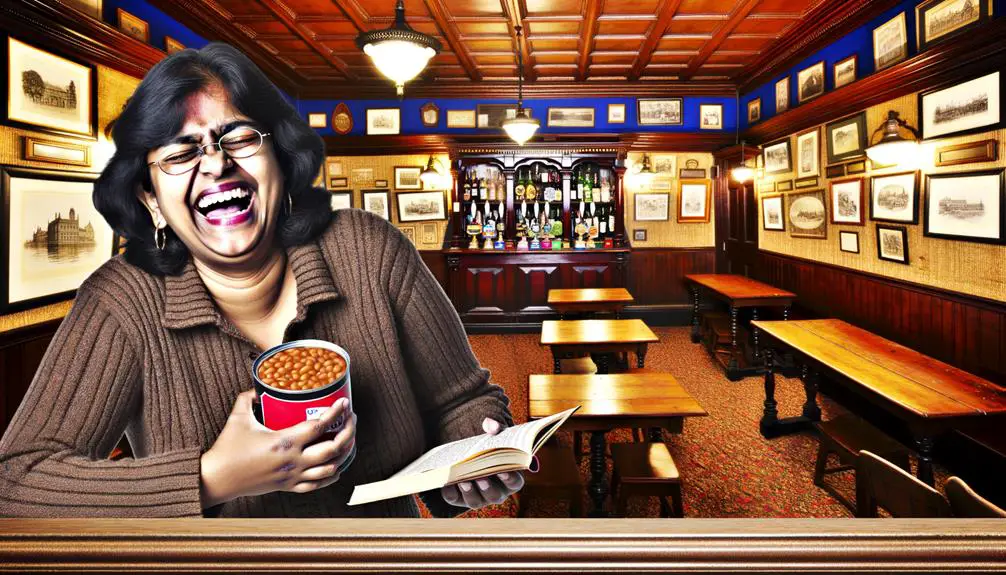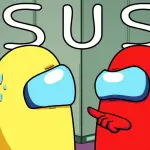In British slang, 'beano' references a lively, boisterous gathering, tracing its lineage back to 19th-century 'bean feasts'—annual celebrations hosted by employers for their workers. This evolution from 'bean feast' to 'beano' not only exemplifies the fluid nature of language influenced by social practices but also highlights the term's adaptability across different social contexts. Today, 'beano' encapsulates the essence of revelry and mirth in various settings, from casual friend meetups to organized events, embodying both regional nuance and broader British cultural identity. The depth of 'beano's significance unfolds further upon exploring its historical roots and contemporary relevance, revealing layers of socio-cultural evolution.
Key Takeaways
- 'Beano' refers to a lively or festive gathering in British slang.
- Originated from 'bean feast', indicating a celebratory feast provided by employers in the 19th century.
- Symbolizes revelry, merriment, and social gatherings among friends or communities.
- Reflects British cultural identity, highlighting traditions of celebration and social interaction.
- Adapted into various regional usages, showing diverse interpretations and applications across the UK.
Origins of 'Beano'
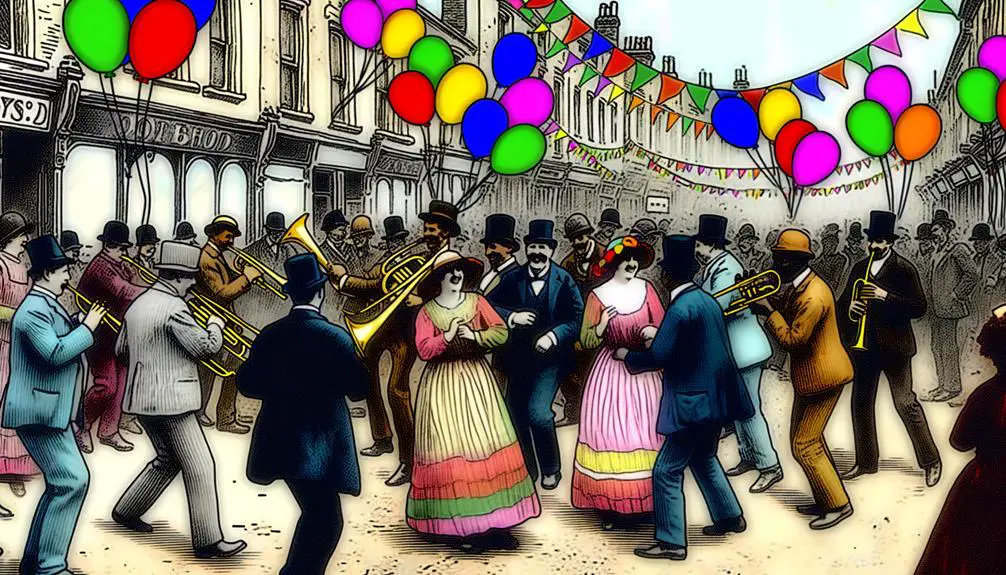
How did the term 'beano' come to signify a boisterous or festive gathering in British slang, you might wonder? The evolution of 'beano' into the lexicon of British English is a fascinating study of linguistic evolution and lexical diversity. Its roots can be traced back to the phrase 'bean feast,' an expression originating in the 19th century, which referred to an annual feast provided by employers for their employees. Over time, the term underwent significant phonetic and semantic changes, a process emblematic of the dynamic nature of language.
The etymology of 'beano' reveals much about the mechanisms of linguistic change. 'Bean feast' itself likely evolved from celebrations involving beans, which were historically associated with festivity and communal gathering. As the term became colloquialized, it was shortened to 'beano,' reflecting a broader trend in English towards lexical economy and efficiency. This shift from 'bean feast' to 'beano' underscores the adaptive capacity of language, illustrating how social practices can influence linguistic forms.
Analyzing the origins of 'beano' provides insight into the interplay between language and culture. It highlights how lexical diversity is not just a feature of language but a reflection of historical and social dynamics.
Definition and Usage
Having explored the origins of 'beano' and its etymological journey from 'bean feast,' we now turn our attention to its contemporary definition and the nuances of its usage in British slang. The term 'beano' has evolved beyond its historical roots to signify a boisterous or spirited gathering, often imbued with a sense of revelry and merriment. This transformation in meaning highlights the dynamic nature of language and its ability to adapt to changing social landscapes.
In modern contexts, 'beano' encompasses a broad spectrum of social gatherings, from informal get-togethers among friends to more organized festive events. The linguistic variations of 'beano' reflect its regional adaptability and the diverse ways in which it is employed across different British communities. This fluidity underscores the term's versatility and its capacity to convey a range of social connotations, from camaraderie and celebration to excess and indulgence.
Analyzing 'beano' within the framework of British slang reveals its significance as a cultural marker, offering insights into the values, traditions, and social dynamics of British society. The term's usage, thus, is not merely linguistic but also serves as a window into the collective psyche, highlighting the importance of community and shared experiences in British culture.
Historical Context
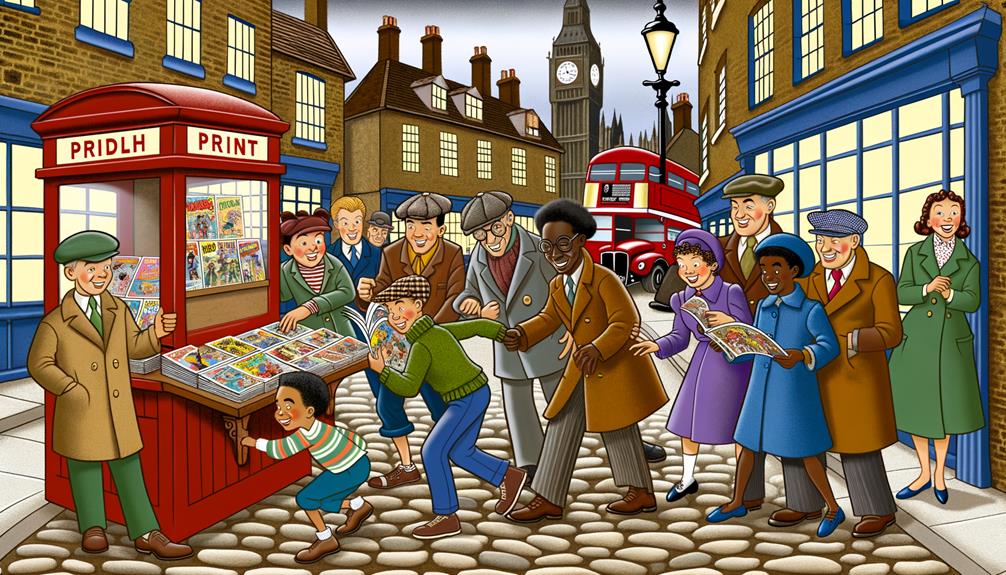
You'll find that the term 'beano' is deeply embedded in UK culture, tracing its etymology to early 20th-century vernacular, symbolizing a rich tapestry of social and linguistic evolution. Its journey from colloquial use to a nuanced symbol in various contexts illustrates the dynamic interplay between language and societal shifts. Examining this trajectory offers insights into how interpretations and applications of 'beano' have diversified, reflecting broader cultural transformations.
Origins in UK Culture
Delving into the origins of 'beano' within UK culture reveals a rich tapestry of linguistic evolution, deeply embedded in the social and historical contexts of British life. The term's genesis can be traced back to the intricate interplay of dialect influences and the natural progression of slang origins within the British Isles. This etymological journey hints at a multifaceted confluence of regional vernaculars, each contributing layers of meaning and nuance to the word. The term's ascendancy within British slang is emblematic of the dynamic, ever-shifting nature of language, reflecting the socio-economic and cultural currents of the times. Through this lens, 'beano' emerges not merely as a word but as a cultural artifact, encapsulating the vibrancy and diversity of British linguistic heritage.
Evolution Over Time
Exploring the evolution of 'beano' over time reveals how its meaning and usage within British slang have been profoundly shaped by historical events and social changes. Initially rooted in the term "bean feast," referring to a festive occasion, its journey through the lexicon reflects a broader narrative about British culture and societal shifts.
- Bean Feast Origins: Initially signifying an annual feast for workers, celebrating community and camaraderie.
- Shift in Context: Over decades, 'beano' began embodying general festive gatherings, beyond the original workplace celebrations.
- Lexical Expansion: The term widened to encapsulate any jovial or exuberant occasion, reflecting changing social dynamics.
- Cultural Embedment: As it evolved, 'beano' became a marker of British identity, symbolizing a penchant for celebration and a reflection of the nation's evolving social landscape.
Usage and Interpretations
While examining the historical context of 'beano' in British slang, it's imperative to understand how its interpretations and usage have been influenced by various socio-economic factors over time. The term's roots, deeply embedded in the party etymology, reveal a rich tapestry of cultural evolution, reflecting changes in societal norms and leisure activities. The evolution of 'beano' showcases a fascinating journey from its initial conception to the present day, marked by a plethora of slang variations. These adaptations underscore the fluid nature of language, highlighting how expressions morph and adapt to the zeitgeist of their era. Analyzing these linguistic shifts offers invaluable insights into the social dynamics and cultural ethos that have shaped the usage and interpretations of 'beano' across different periods in British history.
Beano in Pop Culture
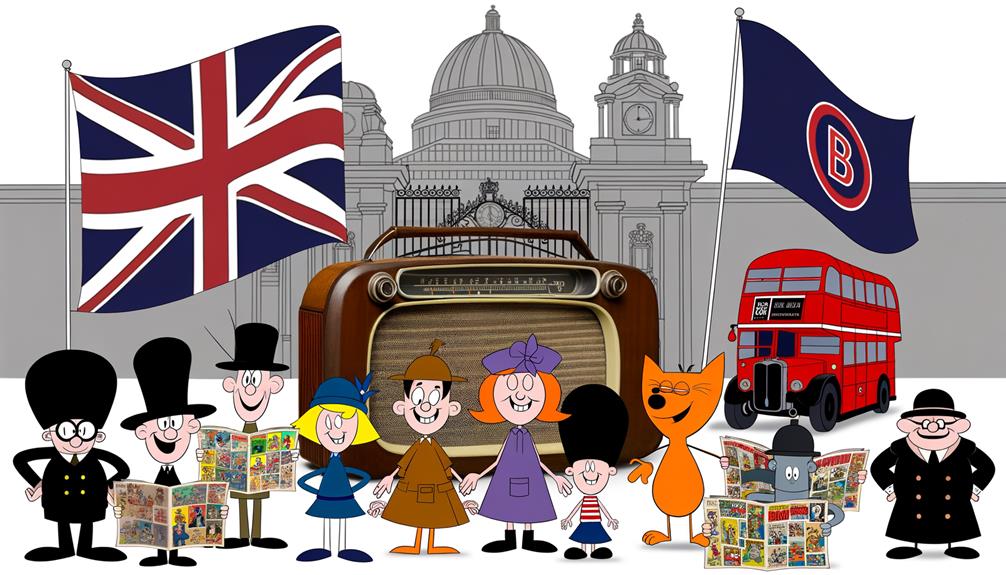
The term 'Beano' has permeated pop culture, reflecting its multifaceted significance within British society and beyond, with its representations spanning various media forms. This cultural penetration is not merely incidental but indicative of the term's adaptability and enduring appeal. To understand its impact, consider the following manifestations:
- Beano Merchandise: A tangible proof of the term's cultural cachet, Beano-themed merchandise ranges from clothing and accessories to home decor, encapsulating the whimsical spirit associated with the term. This commercial aspect underscores the term's evolution from slang to a brandable identity, fostering a sense of community among its aficionados.
- Beano Conventions: Annual gatherings that celebrate the term's legacy, Beano conventions serve as a nexus for enthusiasts to converge, exchange ideas, and partake in the communal joy the term evokes. These events highlight the term's role in fostering a unique subculture within the broader tapestry of British pop culture.
- Literature and Art: The term has inspired a range of creative outputs, from graphic novels to visual art, illustrating its versatility as a muse. These artistic endeavors not only pay homage to the term but also reinterpret its significance in contemporary contexts.
- Television and Film: Beano has found its way into scripts and storylines, serving as a cultural shorthand that resonates with audiences. Its inclusion in visual media further cements its status as a linguistic artifact worthy of exploration and celebration.
Analyzing Beano's presence in pop culture reveals its dynamic nature and its ability to surpass its origins, embodying a cultural phenomenon that continues to evolve and inspire.
Regional Variations
Delving into regional variations reveals that, across the UK, 'Beano' isn't just a singular concept but a multifaceted term, each iteration reflecting the unique cultural nuances of its area. You'll find that dialectical differences and pronunciation variations play a significant role in how 'Beano' is perceived and used. This exploration into regional nuances provides a deeper understanding of the term's adaptability and significance within various UK cultures.
| Region | Pronunciation | Notable Usage |
|---|---|---|
| Scotland | 'Been-oh' | Emphasizes a sense of camaraderie during gatherings. |
| London | 'Bay-no' | Often linked to spontaneous or impromptu social events. |
| Northern England | 'Beeh-no' | Suggests a more intimate or small-scale get-together. |
| Wales | 'Beah-no' | Can imply either a celebratory event or a casual meeting among friends. |
Through this table, you're given a snapshot of how 'Beano' morphs to fit the linguistic landscape of each region. The term's adaptability highlights its importance not just as a word, but as a cultural marker, illustrating the diverse tapestry of British dialects. This investigation into its regional variations showcases the complex interplay between language, culture, and geography.
Comparisons With Other Slang
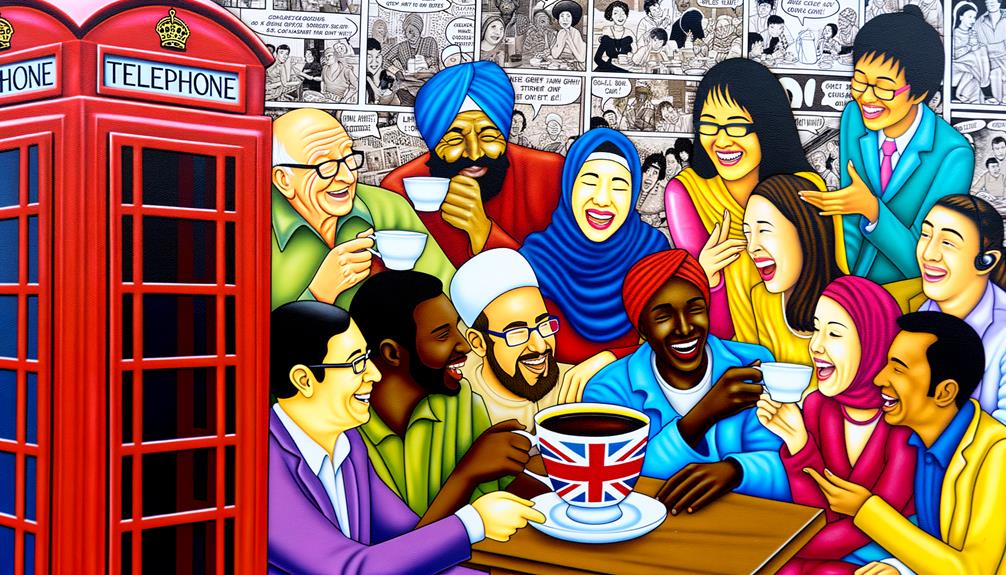
Exploring how 'Beano' compares with other British slang terms, it's evident that its regional adaptability and cultural significance offer a unique lens through which to understand the broader landscape of colloquial language in the UK. When you investigate into the comparison, several aspects stand out:
- Regional Specificity: Unlike more universally understood British slang such as 'mate' or 'cheers,' 'Beano' often requires a deeper cultural or regional familiarity. This specificity underlines the rich tapestry of local dialects and expressions within the UK, showcasing how certain terms are deeply embedded in the local identity.
- Cultural Resonance: 'Beano' carries with it a sense of nostalgia and cultural heritage, much like other colloquial terms that have evolved over time. The evolution of slang reflects societal changes and attitudes, positioning 'Beano' as a linguistic artifact of social history.
- Versatility and Adaptability: In comparison to more static slang terms, 'Beano' and its alternatives demonstrate the adaptive nature of language. Slang evolution is driven by the dynamic use of language, showing how expressions evolve to meet contemporary social and communicative needs.
- Functionality Within Language: 'Beano' serves a similar function to other slang, acting as social glue and a marker of in-group belonging. However, its unique cultural references and regional flavor add layers of meaning not found in more widespread slang.
In essence, 'Beano' and its alternatives exemplify the continuous evolution of slang, highlighting the importance of context, adaptability, and cultural resonance in the ever-changing landscape of colloquial language.
Memorable Beano Moments
Reflecting on British culture's rich tapestry, one can't help but appreciate the distinct moments when 'Beano' transcended its origins, becoming emblematic of broader societal shifts and communal experiences. The term, traditionally rooted in the lexicon of leisure and festivity, found its resonance not just in the language but in the very fabric of social gatherings and beano games that punctuated the British social landscape.
Analyzing these memorable beano moments, it's pivotal to understand how they served as vignettes of cultural evolution. Beano games, often characterized by their whimsy and communal joy, mirrored the shifting dynamics of British society. These gatherings were not mere escapades of revelry; they were a microcosm of camaraderie, a reflection of the collective ethos pivoting around unity, humor, and an unspoken bond of shared experiences.
Moreover, these social gatherings underscored the significance of communal leisure in forging social bonds and cultural identity. As beano became synonymous with joyous occasions, it also encapsulated the essence of British communal life, highlighting how shared moments of leisure and laughter could transcend individual differences, weaving a tighter social fabric. Through this lens, beano's role in British slang transcends mere colloquialism, embodying the spirit of collective celebration and societal cohesion.
Language Evolution
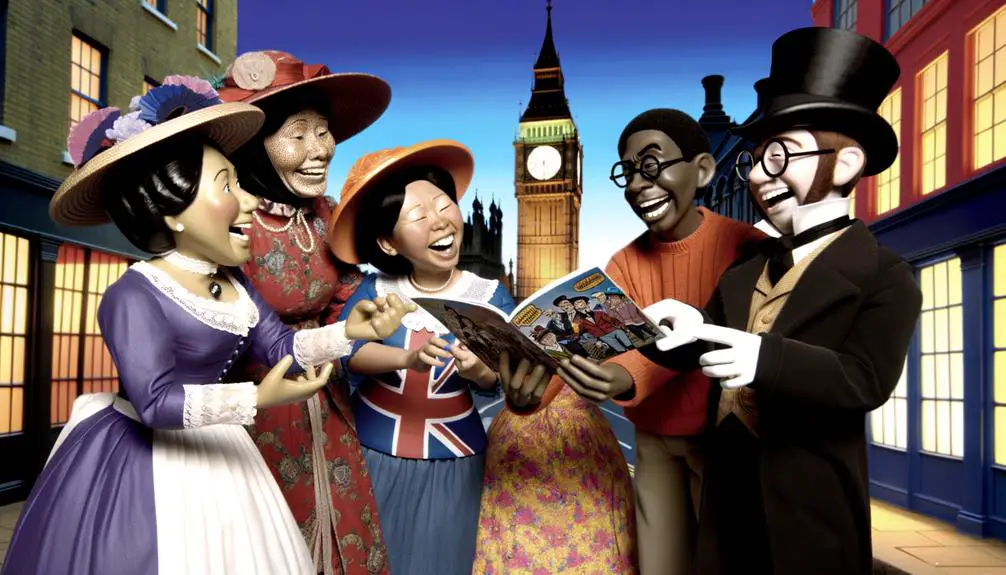
Over time, the evolution of language has seen 'Beano' adapt and embed itself within the vernacular, reflecting broader societal changes and the dynamic nature of British slang. This transformation underscores not just the fluidity of language but also the impact of cultural shifts on linguistic expressions. Here's how 'Beano' exemplifies the broader trends in language evolution:
- Integration and Adaptation: Initially, 'Beano' might have signified a specific type of entertainment or gathering. However, as linguistic diversity and cultural exchanges have intensified, its connotations and usage have expanded, mirroring the adaptability of slang to new social contexts.
- Media Influence: The propagation of 'Beano' across different media platforms has accelerated its acceptance and integration into everyday language, highlighting the role of media in slang globalization.
- Generational Shifts: Each generation reinterprets and repurposes 'Beano,' adding layers of meaning and reflecting changing societal values and attitudes, which is indicative of the generational influence on language evolution.
- Globalization and Cross-cultural Exchange: The spread of British slang, including terms like 'Beano,' to other English-speaking and non-English-speaking countries underscores the phenomenon of slang globalization, facilitated by increased global connectivity and cultural exchange.
This trajectory of 'Beano' within the lexicon illustrates the complexity of language evolution, shaped by linguistic diversity, societal changes, and the forces of globalization.
Beano Today
You'll find that 'beano' has not only persevered in British lexicon but also evolved, reflecting shifts in societal norms and cultural preferences. An examination of current usage trends reveals a nuanced landscape, where the term's application and significance are both broadened and localized, indicating its adaptability. A cultural impact analysis, alongside popular beano references, further elucidates the term's enduring relevance and multifaceted identity within contemporary discourse.
Current Usage Trends
In today's linguistic landscape, 'beano' has evolved beyond its traditional connotations, reflecting a nuanced shift in its application and significance within British slang. This transformation can be attributed to several key factors:
- Social Media Influence: Platforms like Twitter and Instagram have catalyzed a broader, more dynamic use of 'beano', making it resonate with a wider, younger audience.
- International Adoption: As British culture permeates global entertainment, 'beano' finds its way into the vocabularies of non-British speakers, altering its usage contexts.
- Generational Shifts: Younger generations are redefining 'beano', often imbuing it with irony or using it in novel, unexpected ways.
- Digital Communication: Emojis, memes, and online forums have facilitated a playful, versatile adoption of 'beano', further diversifying its meanings and applications.
Cultural Impact Analysis
Examining the cultural impact of 'beano' today reveals how its role in British slang mirrors broader societal shifts and nuances. This term, deeply embedded in the lexicon, illustrates the dynamic nature of language as it evolves in response to changing social contexts. The social implications of 'beano' extend beyond mere colloquialism, reflecting attitudes towards leisure and festivity that resonate with a global audience. Its global spread is indicative of the fluidity of cultural exchange in the digital age, where British slang transcends geographical boundaries, influencing and being influenced by global linguistic trends. Accordingly, 'beano' serves as a lens through which to observe the intricate relationship between language, culture, and identity in a rapidly globalizing world.
Popular Beano References
Delving into the realm of popular culture, one finds that 'beano' has permeated various media platforms, showcasing its enduring relevance and adaptability in contemporary British society. This phenomenon can be analyzed into several key areas:
- Integration in Digital Media: Beano characters have found a new lease of life online, with animated web series and digital comics attracting a new generation.
- Television Adaptations: Various Beano characters have moved to television, bringing classic and revamped stories to a wider audience.
- Merchandising: A wide range of merchandise, from clothing to collectibles, celebrates the rich heritage of Beano characters, making them household names.
- Cultural Events: Beano celebrations, such as anniversaries and special edition releases, underscore the comic's significant impact on British pop culture, engaging fans through interactive events and exhibitions.

